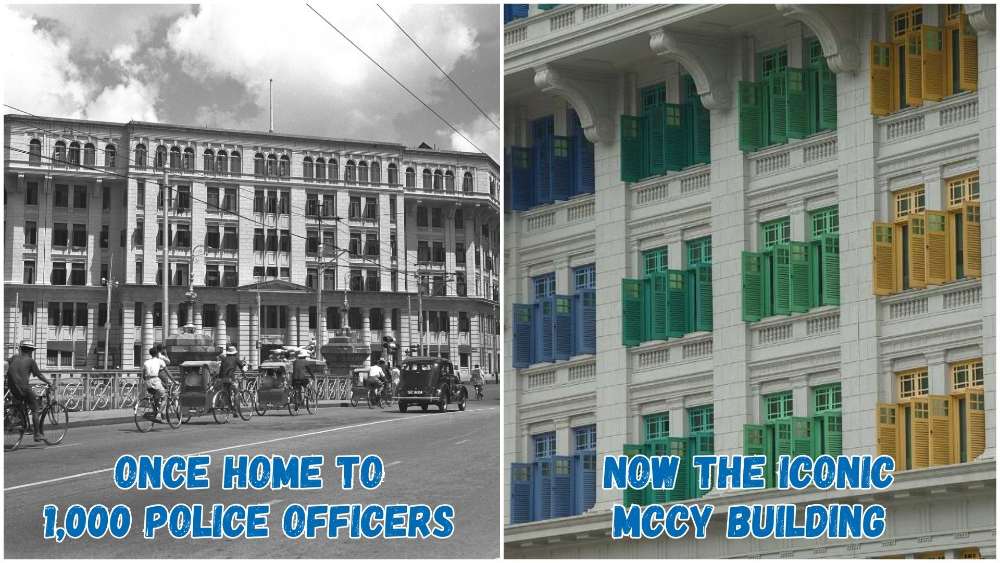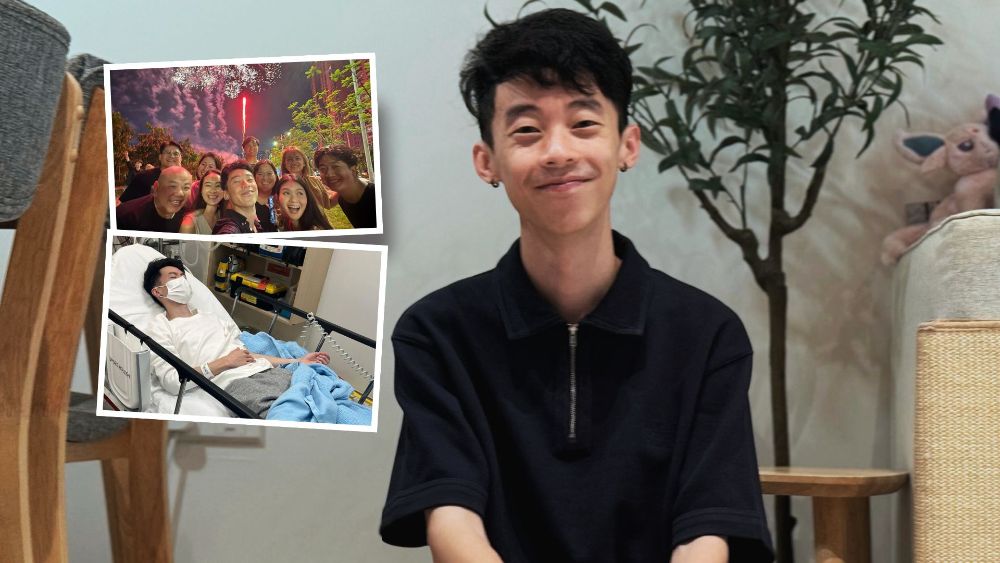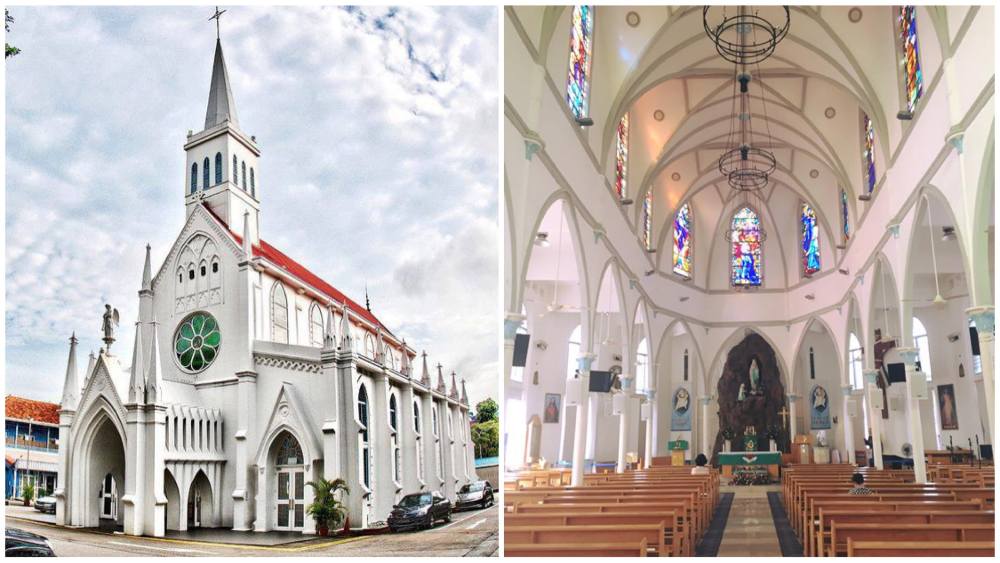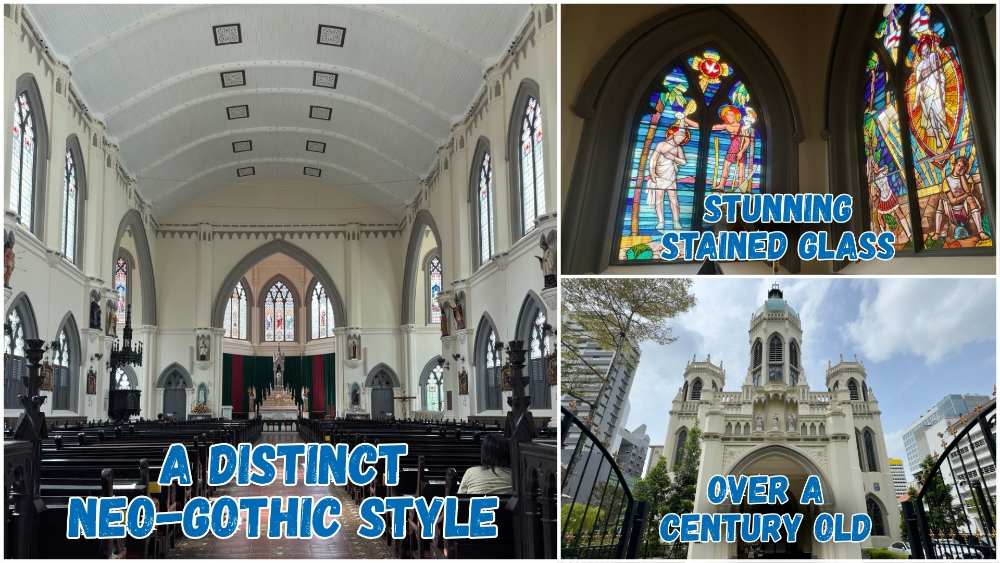National Monuments Of Singapore: Church of Our Lady of Lourdes
What is a National Monument? Who gazettes them? How many national monuments are there in Singapore? To date, the Preservation of Sites and Monuments, a division of National Heritage Board, has identified and gazetted 75 buildings, structures and sites of national significance as an integral part of Singapore’s built heritage.
And we're here to tell you all about them - one National Monument at a time!
You've probably passed by or stepped into more than a few of them without realising they were National Monuments: Al-Abrar Mosque, Asian Civilisations Museum, the Civilian War Memorial, Saint Andrew's Cathedral, the Esplanade Park Memorials, Fort Siloso on Sentosa - no need to plan an itinerary for friends visiting from overseas; just show them this article ✌️
In this edition, we zoom in on one of Singapore's oldest Catholic churches, the Church of Our Lady of Lourdes.
📍 Location
The Church of Our Lady of Lourdes was the 52nd building to be gazetted as a National Monument, and is located near other National Monuments such as Abdul Gafoor Mosque and Sultan Mosque. The MRT stations nearest to it are Jalan Besar and Bugis.
📅 Significant dates
Dates built:
- 1 Aug 1886- May 1888: The Church of Our Lady of Lourdes was constructed along 50 Ophir Road, near Serangoon Road
Milestones:
- 1 Aug 1886: MEP Bishop Eduoard Gasnier laid the corner stone of the building
- 1888: Our Lady of Lourdes School started operations in the church compound
- 2000: A centre was opened to help migrant workers upgrade their knowledge or pick up new skills
Date gazetted: 14 Jan 2005
📜 History
In the early nineteenth century, the small Tamil Catholic community first worshipped at the oldest Catholic church on our Little Red Dot, the Church of the Good Shepherd, which saw a primarily European and Eurasian crowd in attendance. And after the Church of Saints Peter and Paul was completed, the Tamils moved to the latter for worship; the new church was initially intended for the expanding Chinese Catholic congregation.
The parish priest of the church was MEP Reverend Father Pierre Paris. ("MEP" is short for "Société des Missions Etrangères de Paris" or "Society of Foreign Missions of Paris", a Catholic missionary organisation.) Proficient in both Chinese dialects and Tamil, he was able to extend his ministry to the Tamil Indians.
After Father Paris's passing in 1883, MEP Reverend Father Joachim A. M. Meneuvrier took over and nurtured the local Tamil Catholic community. Within two years, by 1885, Father Meneuvrier had grown the Tamil Catholic community from 60 to 300 members, and established a Catholic school with 40 boys and 20 girls.
The brisk growth of the community necessitated a new church, and in 1885, Sir Frederick Weld (Governor of the Straits Settlements), alloted a free plot in Rochor for this aim. The location was suitable because it was very near Serangoon, where many Indians lived.
MEP Bishop Eduoard Gasnier, the Titular Bishop of Malacca with residence in Singapore, laid the cornerstone on 1 Aug 1886. Our Lady of Lourdes Church was completed in May 1888 with contributions from various sources, including Europeans and locals, Catholics and non-Catholics. The church was to be dedicated to the Blessed Virgin Mary under the title of Our Lady of Lourdes, in honour of her apparition in an alcove in Lourdes, France, just three decades earlier.
During the Japanese Occupation (1942-1945), the church survived bombing raids, but the parish school and presbytery (the part of a church reserved for the officiating clergy) suffered damage. The main church escaped mostly unscathed and was enlisted as the Japanese Army's headquarters for the rest of the occupation.
While the Church of Our Lady of Lourdes remains a central point for Tamil Catholics in Singapore, its congregation today also consists of members from different ethnicities.
Since a large proportion of its parish is made up of migrant workers and expatriates from South India, the church has incorporated the celebration of the Feast of Our Lady of Vailankannni and the Tamil harvest festival of Ponggal into its services.
📐 Design and architecture
Frenchman Alexandre Izambert provided the foundation plan, supplied the cast-iron columns and metal frameworks, while local architectural firm Swan & MacLaren designed the Church of Our Lady of Lourdes in the Neo-Gothic style.
The church features spires and lancet-shaped doors and windows all around the church. Cornices (horizontal decorative mouldings that crown a building), crockets (carved ornaments in the form of a curled leaf or cusp), and mouldings adorn the exterior walls of the church.
Its front facade boasts an eight-petalled rose window depicting an image of the apparition of Our Lady of Lourdes, with a statue of an angel blowing a trumpet above the porch. Once inside, the centrepiece of the church is a natural representation of the Lourdes grotto (a Catholic shrine built into a rock formation).
And housed within the grotto are life-sized statues of the Blessed Virgin Mary and Saint Bernadette, the girl who witnessed the Marian apparition (a reported supernatural appearance by Mary, the mother of Jesus).
The nave (central part of a church building) of the Church of Our Lady of Lourdes features three aisles divided by two rows of nine slender columns installed on large square bases. The columns were imported from France, and support 17 equilateral arches that intersect around the sanctuary (the area at the front of the church where the altar and cross are located).
Stained-glass windows in the clerestory (upper part of the nave) depict the 15 Mysteries of the Holy Rosary, which relate the important events in the life of Jesus Christ and the Blessed Virgin Mary. They were crafted in France and installed in 1958 to replace the original windows destroyed during World War Two. Additionally, in 1958, the then parish priest MEP Reverend Father Albert Fortier acquired an electronic carillon (a bell instrument), believed to be the first of its kind in Asia, for the church.
🕖 Opening hours
The main church is currently closed for renovations. Masses are taking place at the Tent of Lourdes, located inside the compound. Find out more here.
🎟️ Admission
Entry is free.
For the latest updates on Wonderwall.sg, be sure to follow us on TikTok, Telegram, Instagram, and Facebook. If you have a story idea for us, email us at [email protected].









